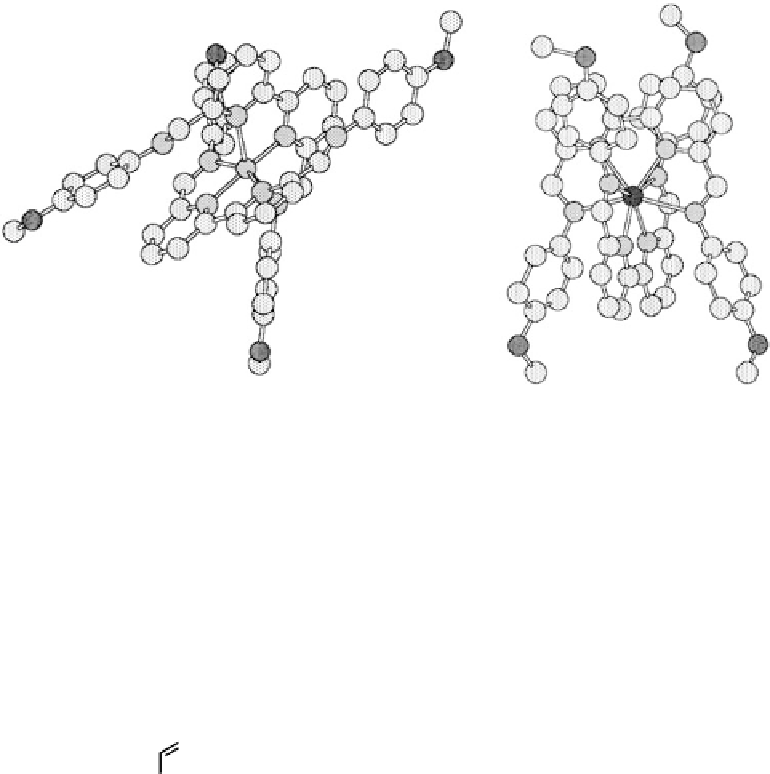Chemistry Reference
In-Depth Information
Figure 7.16 (Left) ORTEP drawings of [Ni(7)
2
](ClO
4
)
2
complexes. (Right) ORTEP drawings of
[Fe(8)
2
](ClO
4
)
2
complexes, The hydrogen atoms are omitted for clarity and 50% probability
thermal ellipsoids are used in the drawings.
The success achieved with the previous complexation reactions with copper(I) salts
prompted us to investigate the construction of helicates with the naphthyridine ligand
8
and larger supramolecular systems with the diazine-based building blocks
10
and
11
. The
first helicate formed with a naphthyridine-based ligand was obtained and characterized by
an X-ray structure determination (Figure 17.18 left), showing a Type IX coordination
mode. With ligand
11
, a tetranuclear complex, again characterized by X-ray crystallogra-
phy (Figure 17.18 right), was selectively obtained. Further illustration of the versatility
Ar
N
N
M
N
N
N
N
N
N
N
N
N
M
N
M
Ar
Ar
Ar
Ar
M
Ar
Type VII
Type VIII
Type IX
N
NN
N
N
NN
N
M
M
N
M
M
N
N
N
Ar
Ar
Ar
Ar
Type XI
Type X
Figure 7.17 Schematic representation of the coordination mode of imino-py ligands based
on naphtyridine and pyridine-pyridazine ligands.



















































































































Search WWH ::

Custom Search